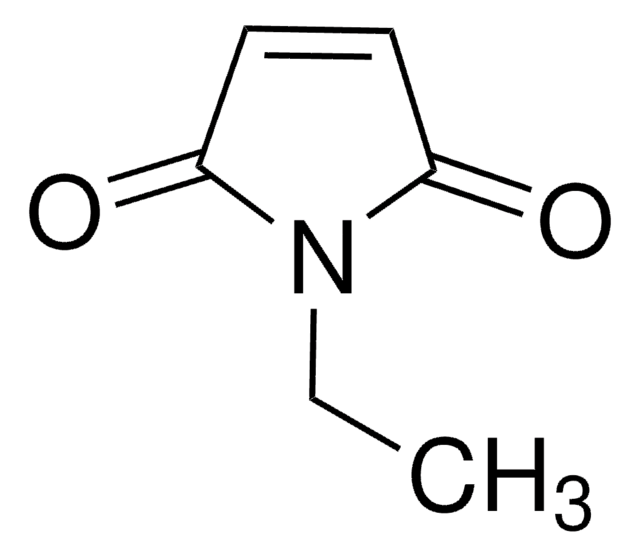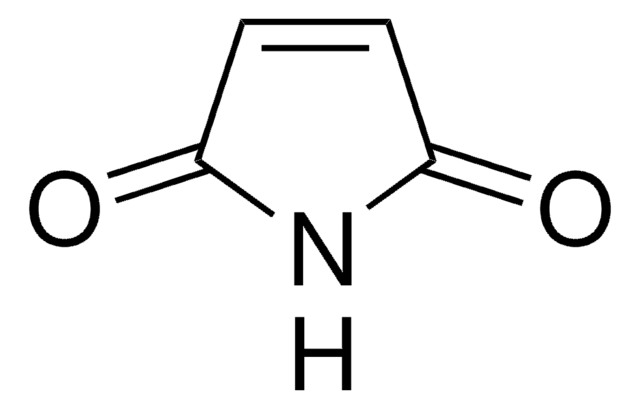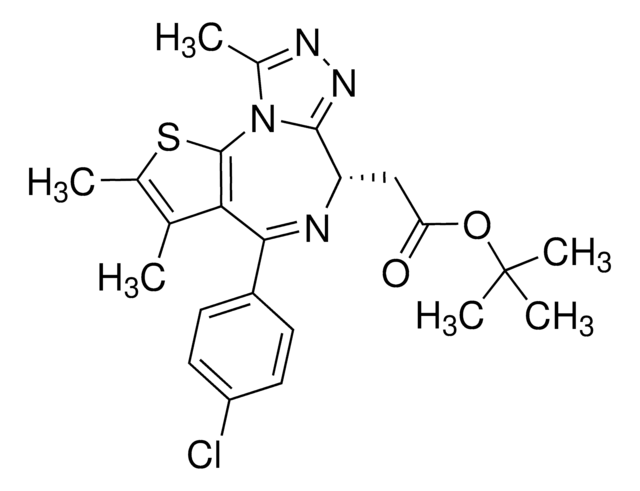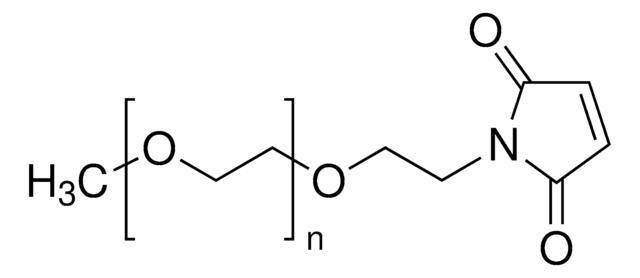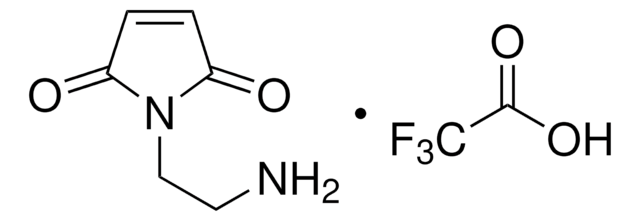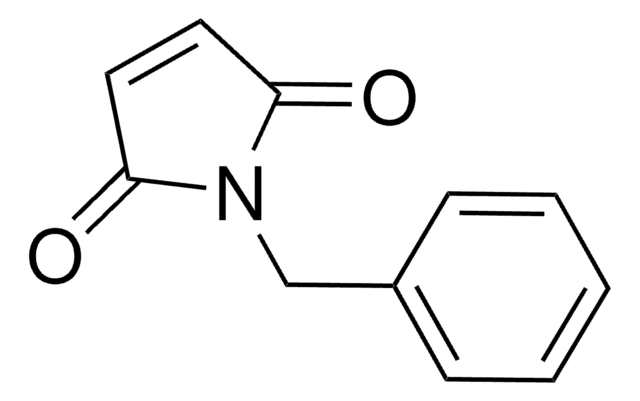Wszystkie zdjęcia(1)
Kluczowe dokumenty
692905
N-Ethyl-d5-maleimide
99 atom % D, 98% (CP)
Synonim(y):
NEM (ethyl-d5)
Zaloguj sięWyświetlanie cen organizacyjnych i kontraktowych
About This Item
Wzór empiryczny (zapis Hilla):
C6D5H2NO2
Numer CAS:
Masa cząsteczkowa:
130.16
Numer MDL:
Kod UNSPSC:
12352005
Identyfikator substancji w PubChem:
NACRES:
NA.13
Polecane produkty
czystość izotopowa
99 atom % D
Poziom jakości
Próba
98% (CP)
Formularz
powder
mp
43-46 °C (lit.)
przesunięcie masy
M+5
temp. przechowywania
2-8°C
ciąg SMILES
[2H]C([2H])([2H])C([2H])([2H])N1C(=O)C=CC1=O
InChI
1S/C6H7NO2/c1-2-7-5(8)3-4-6(7)9/h3-4H,2H2,1H3/i1D3,2D2
Klucz InChI
HDFGOPSGAURCEO-ZBJDZAJPSA-N
Opis ogólny
N-etylo-d5-maleimid jest deuterowanym izotopem analogu N-etymaleimidu, w którym protony metylenowy i metylowy są zastąpione deuterem.
Zastosowanie
Można zastosować N-etylo-d5-maleimid:
- Do syntezy izotopowego nanotagu krzemionkowego poprzez reakcję z prekursorem krzemionki 3-merkaptopropylotrimetoksysilanem (MPTMS) do multipleksowego obrazowania wiązką jonów.
- Jako izotopowy wzorzec wewnętrzny do określania stosunku glutationu (GSH) i disiarczku glutationu (GSSG) w hodowanych komórkach przy użyciu HPLC-UV i LC-QTOF-MS.
Opakowanie
This product may be available from bulk stock and can be packaged on demand. For information on pricing, availability and packaging, please contact Stable Isotopes Customer Service.
Ta strona może zawierać tekst przetłumaczony maszynowo.
Hasło ostrzegawcze
Danger
Zwroty wskazujące rodzaj zagrożenia
Zwroty wskazujące środki ostrożności
Klasyfikacja zagrożeń
Acute Tox. 2 Oral - Acute Tox. 3 Dermal - Eye Dam. 1 - Skin Corr. 1B - Skin Sens. 1
Kod klasy składowania
6.1A - Combustible acute toxic Cat. 1 and 2 / very toxic hazardous materials
Klasa zagrożenia wodnego (WGK)
WGK 3
Temperatura zapłonu (°F)
163.4 °F - closed cup
Temperatura zapłonu (°C)
73 °C - closed cup
Wybierz jedną z najnowszych wersji:
Masz już ten produkt?
Dokumenty związane z niedawno zakupionymi produktami zostały zamieszczone w Bibliotece dokumentów.
Stefan Harmsen et al.
Advanced materials technologies, 5(7) (2020-07-15)
High-dimensional profiling of markers and analytes using approaches, such as barcoded fluorescent imaging with repeated labeling and mass cytometry has allowed visualization of biological processes at the single-cell level. To address limitations of sensitivity and mass-channel capacity, a nanobarcoding platform
T R Sutton et al.
Redox biology, 16, 359-380 (2018-04-09)
Several diseases are associated with perturbations in redox signaling and aberrant hydrogen sulfide metabolism, and numerous analytical methods exist for the measurement of the sulfur-containing species affected. However, uncertainty remains about their concentrations and speciation in cells/biofluids, perhaps in part
Benjamin Neuditschko et al.
Molecular & cellular proteomics : MCP, 19(3), 478-489 (2020-01-02)
The prediction of metastatic properties from molecular analyses still poses a major challenge. Here we aimed at the classification of metastasis-related cell properties by proteome profiling making use of cutaneous and brain-metastasizing variants from single melanomas sharing the same genetic
Xueni Sun et al.
Metabolites, 10(7) (2020-07-28)
Glutathione (GSH) and glutathione disulfide (GSSG) are commonly used to assess the oxidative status of a biological system. Various protocols are available for the analysis of GSH and GSSG in biomedical specimens. In this study, we present an optimized protocol
Nasz zespół naukowców ma doświadczenie we wszystkich obszarach badań, w tym w naukach przyrodniczych, materiałoznawstwie, syntezie chemicznej, chromatografii, analityce i wielu innych dziedzinach.
Skontaktuj się z zespołem ds. pomocy technicznej